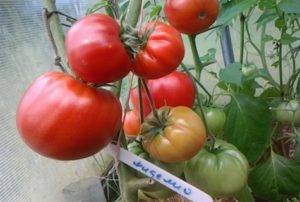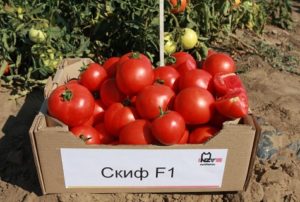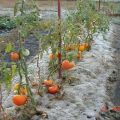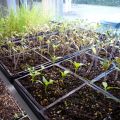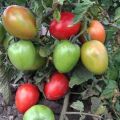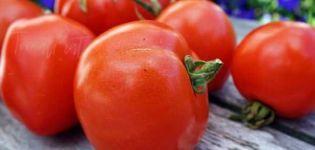Characteristics and description of the Marmande tomato variety, its yield
The Marmande tomato is a non-hybrid variety bred by Dutch breeders. It is distinguished by high, friendly yield, earlier ripening of fruits and ease of care. Plants are excellent for growing in unprotected ground and closed greenhouses.
General characteristics
Marmande tomatoes are bred by Dutch breeders. The variety belongs to the group of early maturing, indeterminate. Plants are of medium height. The bush is not standard, it grows up to 1.2 - 1.5 meters. The maximum yield is achieved when grown with 3-4 stems.
Marmande was attributed to early ripening varieties due to the short ripening times of the fruits. The technical ripeness of the crop occurs in the period from 85 to 100 days after germination. Fruiting lasts from July to September. With proper care, the harvest is plentiful and friendly.
Super Marmande fruits are large. The shape is rounded, strongly flattened. The ribs are pronounced. The weight of tomatoes ranges from 150 to 200 grams. In a state of technical maturity, the fruit is deep red. The rind is dense, shiny. The pulp is juicy, fleshy. The number of seeds in fruits is small. The taste is excellent. Tomatoes are distinguished by their delicate, sweet taste and pronounced tomato aroma.
Given the description of the variety, the fruits are used in slicing, green salads, making tomato juice, and various preservation. Bright appearance and good keeping quality make Marmande suitable for sale.
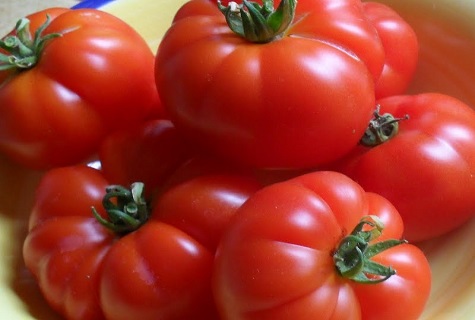
Advantages and disadvantages
Marmande tomatoes are found on most households. Their popularity is due to a wide range of positive qualities.
Among the advantages of the variety are:
- attractive appearance;
- excellent taste;
- storage duration;
- transportability;
- early ripening of fruits;
- friendly and long-term fruiting;
- resistance to diseases and pests;
- unpretentious care.
Reviews about the variety allowed us to highlight only one significant drawback. With too frequent and excessive fertilizing, the green mass on the bushes increases in volume and fruiting decreases. The overgrowth of the bushes leads to difficulties in plant care.
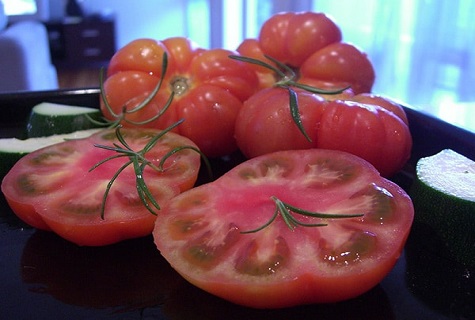
Sowing seedlings
The variety is bred by the seedling method. Sowing seeds begins in early March. When grown in closed greenhouses, preparation begins 2-3 weeks earlier. From the moment of emergence, before transfer to the ground, at least 60 days must pass.
For seedlings, individual containers measuring 10 by 10 centimeters are used. Prepare the soil yourself or use a ready-made nutrient mixture. Seeds are hardened and processed in potassium permanganate before planting.The seeds are deepened by no more than 1 centimeter.
Before sprouting, the containers are covered with glass or film. Seedling greenhouses are kept at a temperature of 22-25 degrees.
After emergence, the film is removed. Plants are regularly watered by sprinkling, the soil is loosened. At stage 2-3 of these sheets, a pick is made. Tempering is carried out 1-2 weeks before transferring to the ridges.
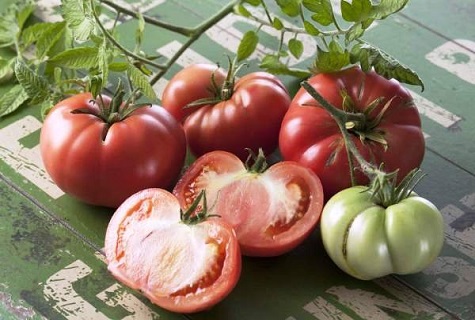
Agricultural rules
Marmande belongs to the category of light and easy-to-care varieties. It is unpretentious to the composition and quality of the soil. It is distinguished by a stable high yield even in scarce areas without additional fertilization.
If it is necessary to increase the volume and quality of the crop, experts recommend following the rules for growing tomatoes.
- Choosing a place. The place for Marmande is chosen with light fertile soils. The variety is light and thermophilic. Therefore, the areas should be well lit.
- Growing method. Tomatoes are grown by the sowing method. Seedlings are sown in early March. Before transferring to the ground, hardening is mandatory.
- Transfer to the ground. Plants are transferred to unprotected soil in the second half of May. In closed greenhouses or under a film, seedlings are planted in late April or early May. This method allows for an earlier harvest.
- Landing scheme. The distance between the bushes should be at least 50 centimeters, between the rows 40. Up to 9 bushes are placed on 1 square meter.
- Fertilizing the soil. The first stage of fertilization is produced in early spring. Humus is applied to the ridges during the digging of the site. Then, tomatoes are fed 2-3 times per season with organic fertilizers.
- Watering. Plants are hygrophilous. They need regular watering. It is carried out in the evening with warm, settled water.
Plants should be protected from night frosts. In case of a sharp drop in temperature, it is recommended to cover the bushes with foil.
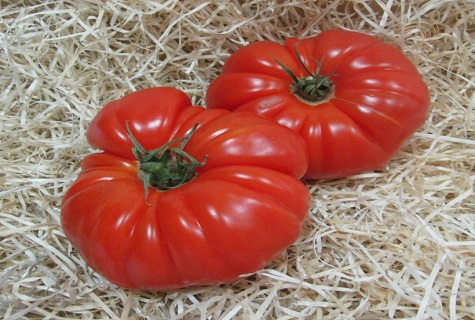
Diseases and pests
The description of Marmande tomatoes speaks of the resistance of the variety to the effects of diseases and pests. The greatest immunity in the plant is noted to the effects of late blight and verticillosis.
For the prevention of seasonal diseases, the bushes are treated with insecticidal preparations several times per season. It is also recommended to inspect the plants regularly. Dried and yellowed leaves on the bushes are immediately removed.
The characteristic of the Marmande variety makes it a real find for a gardener of any level. With proper care, plants produce high yields for a long time. The excellent taste of tomatoes allows you to use them fresh, sliced, salads, as well as various preservation.

